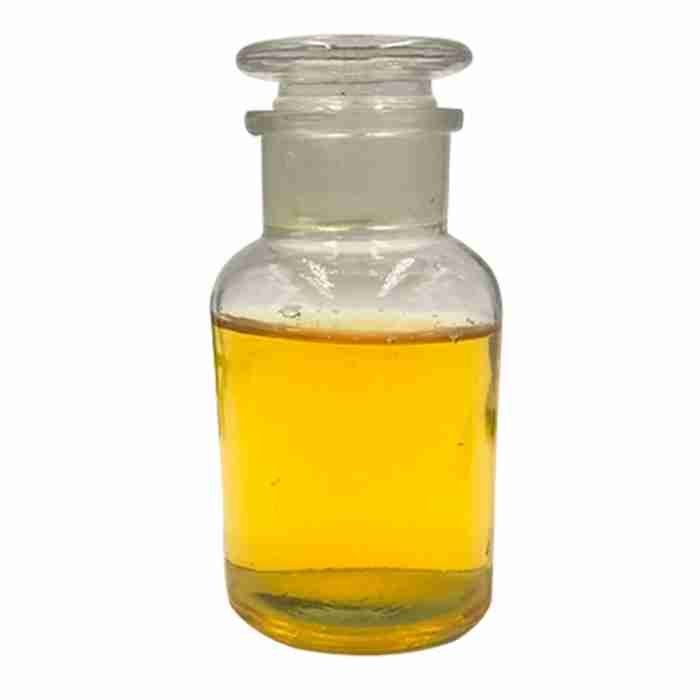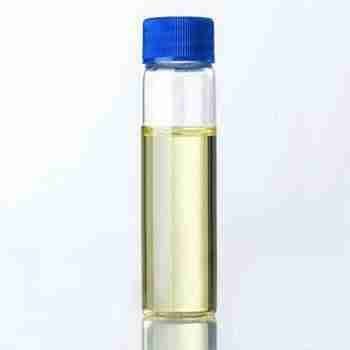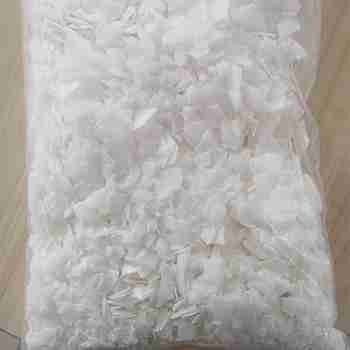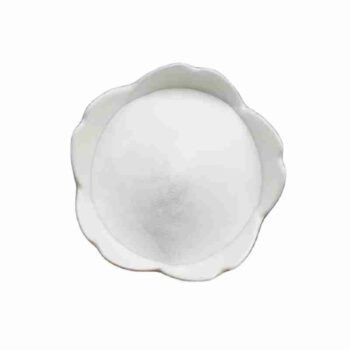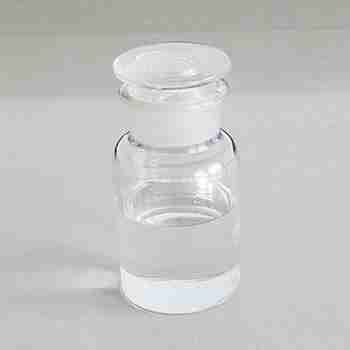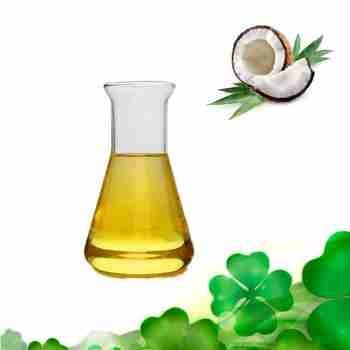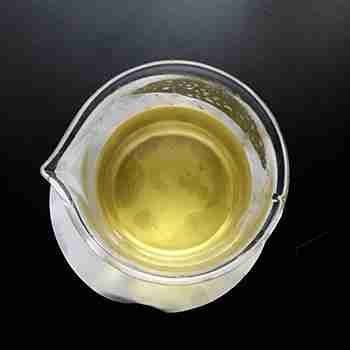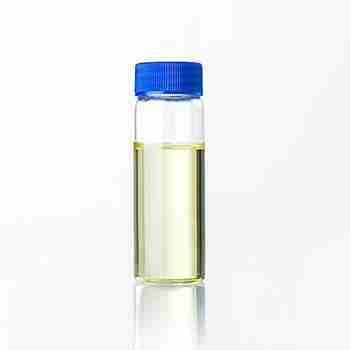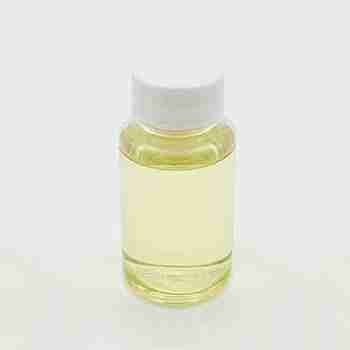Surfactant
-
Coconut diethanolamide CAS# 68603-42-9阅读更多
Coconut diethanolamide has the properties of wetting, washing, emulsifying, softening, etc. It has good foam stabilising effect on anionic surfactants. It is an indispensable raw material for a variety of cosmetic products such as liquid detergents, liquid soaps, shampoos, cleansers and cleansers. When used with soap, it is resistant to hard water.
It can also be used as an emulsifying stabiliser for cream products, and is widely used in shoe polish, printing inks, drawing supplies and so on.It is used in the textile printing and dyeing industry as a detergent for fabrics, as well as other detergent ingredients and thickeners.It is one of the components of spinning oil for synthetic fibres such as polypropylene. It has a good thickening effect on liquid products using anionic surfactants as the main raw material.
-
Coconut diethanolamide CAS 2315-36-8阅读更多
Product name: Coconut diethanolamide
CAS: 2315-36-8
Molecular Formula: C6H12ClNO
Molecular Weight: 149.62
Appearance: Clear colorless to light yellow Liquid or Solid -
Coconut diethanolamide CAS#68603-42-9阅读更多
Coconut diethanolamide is a derivative of coconut fatty acids, where the fatty acid is reacted with diethanolamine to form an amide. This compound is commonly used as an emulsifier and viscosity modifier in personal care products such as shampoos, conditioners, and creams. It imparts a smooth texture and enhances the stability of formulations. Coconut diethanolamide is valued for its ability to improve the foaming properties and skin feel of products, making it a preferred ingredient for creating luxurious and effective formulations in the cosmetics and personal care industry.
-
Coconut diethanolamide CAS#68603-42-9阅读更多
Coconut diethanolamide is a derivative of coconut fatty acids, where the fatty acid is reacted with diethanolamine to form an amide. This compound is commonly used as an emulsifier and viscosity modifier in personal care products such as shampoos, conditioners, and creams. It imparts a smooth texture and enhances the stability of formulations. Coconut diethanolamide is valued for its ability to improve the foaming properties and skin feel of products, making it a preferred ingredient for creating luxurious and effective formulations in the cosmetics and personal care industry.
-
Coconut oil acid diethanolamine (CDEA)CAS 6863-42-9阅读更多
Active purity: ??77.0%
Appearance: Light yellow liquid
Packaging: 200kg/drum
Sample: available -
Coconut Oil Monoethanolamide CAS 68140-00-1阅读更多
Chemical Name: Coconut Oil Monoethanolamide
CAS No.: 68140-00-1
Molecular Formula: C14H29NO2
Molecular Weight: 243.38556
Appearance: White Flaky -
Coconut Oil Monoethanolamide CAS 68140-00-1阅读更多
Chemical Name: Coconut Oil Monoethanolamide
CAS No.: 68140-00-1
Molecular Formula: C14H29NO2
Molecular Weight: 243.38556
Appearance: White Flaky -
Coconut oil monoethanolamide CAS# 68140-00-1阅读更多
Coconut oil monoethanolamide (CAS 68140-00-1) is usually a white to light yellow flake or powder solid.
It has good thickening, foam stabilization, and decontamination properties. It is widely used in personal care and cleaning products such as detergents, shampoos, and shower gels.
For example, in some shampoo formulas, coconut oil monoethanolamide can increase the consistency of the product, making it easier for shampoo to adhere to the hair when used; in shower gels, it helps to produce rich, delicate and stable foam, enhancing the bathing experience. -
Coconut oil monoethanolamide CAS#68140-00-1阅读更多
Coconut Oil Monoethanolamide is a high-performance emulsifier derived from natural coconut oil. It is a key component in personal care and cosmetic formulations, providing excellent emulsifying properties and improving product texture. With its natural origin and superior performance, it is the preferred choice for creating stable and high-quality products.
-
Coconut oil monoethanolamide CAS#68140-00-1阅读更多
Coconut Oil Monoethanolamide is a high-performance emulsifier derived from natural coconut oil. It is a key component in personal care and cosmetic formulations, providing excellent emulsifying properties and improving product texture. With its natural origin and superior performance, it is the preferred choice for creating stable and high-quality products.
-
Cyclopentane Cas 287-92-3加入购物车-50%Limited
$199.00原价为:$199.00。$100.00当前价格为:$100.00。Product name:Cyclopentane
Purity:96%
Appearance:White powder
Package:25kg/bag
Sample:Available
-
D-Glucopyranose, oligomeric, C12-14-alkyl glycosides CAS 157707-88-5阅读更多
Chemical Name: D-Glucopyranose, oligomeric, C12-14-alkyl glycosides
CAS No.:?157707-88-5
Packaging: 50kg/drum -
D-Glucopyranose, oligomers, C12-14-alkyl glycosides CAS#157707-88-5阅读更多
Alkyl glucoside, AlkylPolyglucoside(APG). It is formed by the dehydration of glucose hemiacetal hydroxyl group and fatty alcohol hydroxyl group under catalytic action. Alkyl glycoside (APG) is a new type of highly efficient, non-toxic, biodegradable non-ionic surfactant with good surface activity. The raw materials required for its production are glucose and fatty alcohol derived from renewable natural resources. The combination can form the best surfactant at present. Strong foaming power, foam stability, good wettability, excellent compatibility, little irritation to the human body, extremely low toxicity, rapid biodegradation, is the only variety in the world that can be called non-toxic, therefore, APG is known as “world-class” surfactants with its superior performance. Alkyl glycosides can be used in daily chemical industry, textile industry, pesticide industry, food industry, oil production industry and so on.
-
Decyl D-glucoside Cas 54549-25-6阅读更多
Chemical Name: Decyl D-glucoside
CAS No.: 54549-25-6
Molecular Fomula: C16H32O6
?
Molecular weight:?320.42
Appearance:?Light yellow liquid
Assay??99%, 99.5% -
Decyl D-glucoside Cas 54549-25-6阅读更多
Chemical Name: Decyl D-glucoside
CAS No.: 54549-25-6
Molecular Fomula: C16H32O6
?
Molecular weight:?320.42
Appearance:?Light yellow liquid
Assay??99%, 99.5% -
Decyl Glucoside Cas 141464-42-8阅读更多
Chemical Name: Decyl glucoside; C8-14 Alkyl glucoside
CAS No.: 141464-42-8
Molecular Fomula: C16H32O6
Molecular weight:?320.42168
Appearance:?Light yellow liquid -
Decyl Glucoside Cas 141464-42-8阅读更多
Chemical Name: Decyl glucoside; C8-14 Alkyl glucoside
CAS No.: 141464-42-8
Molecular Fomula: C16H32O6
Molecular weight:?320.42168
Appearance:?Light yellow liquid -
Decyl Glucoside CAS 68515-73-1阅读更多
Assay: 50%
Appearance: Light yellow liquid
Supply Ability: 1 Ton/Tons per Week
Package: plastic drum with 200kgs, or IBC drum.
Sample: Available,Assay: 50%
Appearance: Light yellow liquid
Supply Ability: 1 Ton/Tons per Week
Package: plastic drum with 200kgs, or IBC drum.
Sample: Available,Assay: 50%
Appearance: Light yellow liquid
Supply Ability: 1 Ton/Tons per Week
Package: plastic drum with 200kgs, or IBC drum.
Sample: Available,Assay: 50%
Appearance: Light yellow liquid
Supply Ability: 1 Ton/Tons per Week
Package: plastic drum with 200kgs, or IBC drum.
Sample: Available -
Decyl glucoside CAS#68515-73-1阅读更多
Decyl Glucoside is an eco-friendly, non-ionic surfactant derived from renewable resources. Renowned for its mildness and biodegradability, it is ideal for creating gentle, high-performing cleaning agents in personal care and household products. Its sustainable and effective nature makes it a preferred choice for green formulations.
-
Decyl glucoside CAS#68515-73-1阅读更多
Decyl glucoside, scientifically known as ??-D-Glucopyranoside, is a non-ionic surfactant derived from renewable resources, such as glucose and fatty alcohols. It is a biodegradable and mild alternative to traditional surfactants, making it a preferred choice for eco-friendly and sensitive skin formulations.
This compound is characterized by its ability to form stable emulsions and foams, which are essential properties in a variety of applications, including personal care products and household cleaning agents. Decyl glucoside is valued for its low irritation potential and excellent skin compatibility, making it suitable for use in baby care and cosmetic products.
Chemically, decyl glucoside features a hydrophilic head and a hydrophobic tail, allowing it to effectively reduce surface tension and solubilize oils in water. Its mildness and biodegradability contribute to its use in formulations that require gentle cleansing without compromising the integrity of the skin’s natural barrier.
In summary, decyl glucoside is a versatile and sustainable surfactant that offers a balance of performance and safety. Its eco-friendly profile and compatibility with sensitive skin types make it an ideal ingredient for a wide range of personal care and cleaning products.

